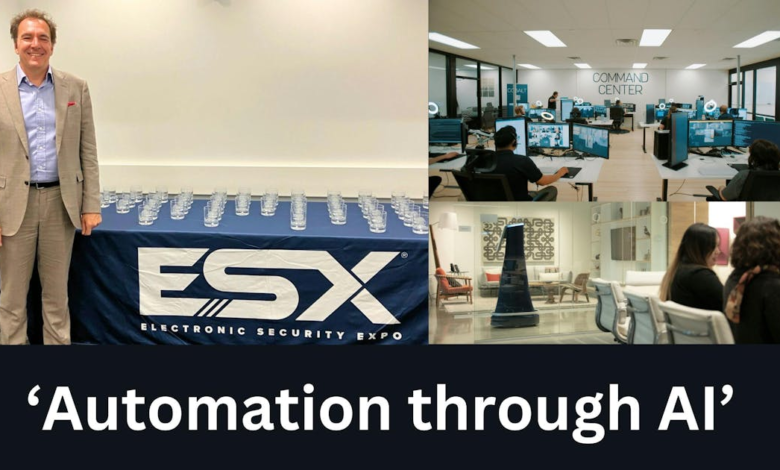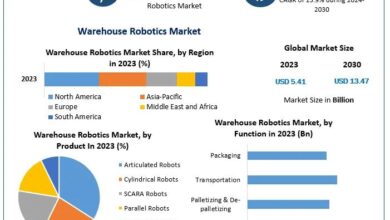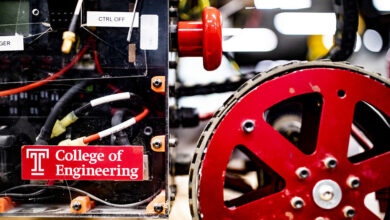ESX exclusive: Zooming in on Dean Drako’s acquisition of Cobalt Robotics

Perhaps the biggest news of the day Tuesday at ESX was serial entrepreneur Dean Drako purchasing Cobalt Robotics and re-branding it as Cobalt AI.
Cobalt Robotics was founded in 2016 and bills itself to be the only company to automate repetitive manual security and facility tasks with an integrated service that unifies state-of-the-art machine learning software, robotics and human oversight.
Drako will serve as the company’s chairman, while Cobalt CEO Ken Wolff will continue leading the company, which will remain independent with its current management team and entire staff.
Drako – the founder and CEO of Eagle Eye Networks and owner and chairman of Brivo – renamed Cobalt Robotics as CobaltAI.com as a reflection of the company’s AI leadership across multiple domains.
Ken Wolff, Cobalt’s CEO, says the company is “thrilled” Drako purchased the company and credited him for investing capital and strategic insights “to grow other physical security companies to unicorns and technology leaders in their space.
“We share a mutual vision of the tremendous advantages of automation through AI with human verification. Dean’s acquisition validates our strategy to improve monitoring, response times and lower costs and gives us the capital to deliver for our enterprise clients.”
Security Business Editor-and-Chief Paul Rothman sat down with Drako Tuesday at ESC 2024 to go more in-depth about the acquisition and Cobalt’s future prospects.
Q: I incorrectly assumed Cobalt was simply a security robotics company until I did some deeper research. What do you think the perception of the company is?
Drako: One would hope that given the name of the company that the perception is that they are a robot company. That was where they started and the goal was to make robots that augmented or replaced security guards on the interior of buildings.
Q: Based on its website, Cobalt has branched out into AI-based monitoring and SOC as a Service.
Drako: I don’t think monitoring is actually accurate. They use that word, but I don’t think it’s “traditional monitoring” as the industry sees it. They developed a lot of AI that ran the robot in the cloud so they could do things a security guard should do — check the doors, make sure windows are closed, [etc.]
As they were developing the AI, they realized AI could be applied to a fixed camera, so they don’t need a robot to investigate every door propped open. They learned that one of the most important things a security guard did was doors. It’s all about the doors and the windows, but mostly the doors. Are they closing properly or are they held open, not held open [etc.]. They got pretty engaged in this and developed a solution that gained significant traction because they can reduce the number of guards needed to [investigate] problem entry events.
Q: I see the appeal. What I don’t understand is how it’s not part of Eagle Eye Networks.
Drako: It may end up being part of Eagle Eye, it may end up being part of Brivo, and it may just end up being independent. Right now I’m non-committal on what I’ll do down the road. It is better as an independent company so we can understand what it is and get it transitioned. There are some transitional considerations because the company direction is going to change a little bit. Management is going to change a little bit.
Q: Will the direction move away from the robotics and more towards the software and AI?
Drako: There won’t be any directional changes that aren’t already underway. There’s still a good use case for the robots, but the use case for the fixed cameras is just as good. So I think going forward that this hybrid is really going to be the ticket.
Q: So the software was the appeal of the company?
Drako: Yes, exactly. They are the only folks who’ve really applied significant amounts of AI to the access control/video combination. It was impressive, and they also have what I’d call the “human in the loop” component, which I think is key for the deployment of AI given the stage we are at right now.
You need an overseer. They have a team of people who do this at Cobalt for the robots. They have a human in the loop as a part of the whole system. AI does the first pass and says something may be a problem, and it goes to a human to review and make a decision. So Cobalt has this all figured out and is executing it on a large scale with very big enterprise customers like General Motors, Amazon and FedEx.
Q: It could be construed that what you just described is similar to video monitoring companies like Netwatch, which is here at ESX, that provide video verified monitoring using some AI algorithms. Is that why you announced it while you are here?
Drako: It’s just a coincidence. And just so everyone understands, Cobalt is not in monitoring. Let me explain: One of [Cobalt’s] customers has 500 buildings that combine for something on the order of three million access control alerts every year. For every alert, they can dispatch a guard to see what’s wrong, or they can use robots, AI and cameras with people in the loop to cut that down by 95%. It is just filtering events that go to the monitoring center. It is more like a kind of layer in between the alert and the monitoring center.
Q: So, could you market this to monitoring providers as a product?
Drako: Yes. I think the strongest analogy is Calipsa [an alarm analysis and false alarm software company bought by Motorola]. They did alarm filtering for the monitoring companies. Cobalt is doing AI filtering to make the monitoring companies more efficient. But in Cobalt’s case, most of their customers already do their own monitoring because they are that big. In the long run, do we take the AI software and sell it as a service to monitoring companies. That’s open.
Q: Certainly the software could be coupled with the Brivo access control system and Eagle Eye cameras, I would think.
Drako: It will be integrated with Eagle Eye and Brivo, but I’m always about the open platform. As you know, Eagle Eye is an open platform that integrates with other access control systems, and Brivo is open and integrates with other video systems. Cobalt is open, and we will integrate it with all the access control and video systems. The closed ecosystem thing is just not going to fly in the enterprise market.
Q: So this is a “Dean Drako acquisition” and it has nothing formal to do with Eagle Eye or Brivo yet?
Drako: Correct. But it could. But it is very important for Cobalt to interface all the access control systems and all the video systems.
Q: There was a lot of venture capital invested in Cobalt, is it 100% yours?
Drako: Yes. CEO Ken Wolf will remain with the company, and I’m happy about the team. Now we just need to focus and get out there and make it happen.
Q: Is this a death blow to robots?
No, not by any means. I’ve talked to several robot customers of Cobalt and they love them. They work twenty-four hours a day, seven days a week. They don’t have sick time and the customers don’t have to pay three or four guards to cover a shift. So there are some places where it works really well. For example, they have AI on a robot that will do a badge challenge, asking someone not wearing a badge to please scan it. There are the welcoming kinds of duties that a robot can sometimes do like guiding people to a particular conference room.



